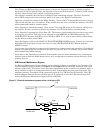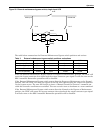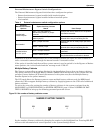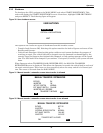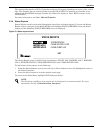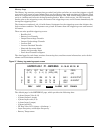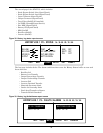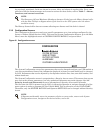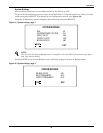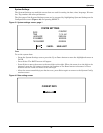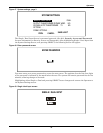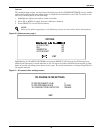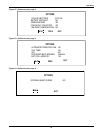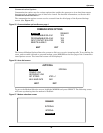
Operation
38
As previously mentioned, faults are shown in reverse video, and alarms in regular video. For a com-
plete list of all the alarm messages and corrective actions for these faults, refer to Table 7 - Alarms,
functions, and corrective actions.
The History Status buffer does not resume collecting new frames until the fault is cleared.
3.3.5 Configuration Screens
The Configuration Screens are used to set specific parameters or to view settings configured by the
factory or Liebert Global Services (LGS). To access the System Configuration Screens, go to the Main
Menu, move the highlighted cursor to SYSTEM CONFIGURATION, and press Select.
Figure 40 Configuration screen
The System Configuration screen lists parameters that can be changed to adjust your UPS module to
your site requirements. Some of the information displayed is factory set and should only be changed
by LGS. Parameters that can be adjusted by the Operator include date, time, auto dial number, and
modem baud rate.
The System Configuration screen is categorized as a Security Access screen. This means that anyone
may review the present parameters, but only authorized Operators may make changes. See 3.2 -
Security Access and Passwords for more information on Security Access and Passwords.
The first time the UPS is powered up (by LGS), it allows the Operator to navigate through all of the
menu options in order to program the Non Volatile RAM. This is referred to as the COLD START.
Thereafter, only the SYSTEM RATINGS and Operator SETTINGS can be changed without Security
Access.
NOTE
The Emergency Off and Hardware Shutdown alarms will also freeze the History Status buffer
with the Auto Transfer to Bypass alarm (if the load is on the UPS system when the alarm
condition occurs).
NOTE
If Operator accidentally sets a site parameter digit to a wrong value, return to the System
Configuration screen, navigate to the desired screen, and re-set.
CONFIGURATION
SYSTEM SETTINGS
USER SETTINGS
FACTORY SETTINGS
ALARM MASK
CUSTOMER ALARM INTERFACE
EXIT



